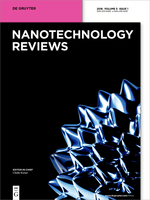
Nanotechnology Reviews
Scope & Guideline
Empowering Global Research in Nanoscience
Introduction
Aims and Scopes
- Nanomaterials Synthesis and Characterization:
The journal highlights advancements in the synthesis and characterization of nanomaterials, including methods like green synthesis, sol-gel techniques, and electrospinning, providing insights into their structural, optical, and thermal properties. - Applications in Biomedical Engineering:
A significant focus is placed on the application of nanotechnology in biomedical fields, including drug delivery systems, antimicrobial agents, and nanomedicine, which utilize nanoparticles for enhanced therapeutic efficacy. - Energy Applications:
Research articles explore the role of nanomaterials in energy applications, such as battery technology, photocatalysis, and supercapacitors, emphasizing their potential to enhance performance and efficiency. - Environmental Remediation:
The journal addresses the use of nanotechnology in environmental applications, particularly in the remediation of pollutants and heavy metals, showcasing innovative approaches to environmental challenges. - Nanocomposites and Advanced Materials:
Nanotechnology Reviews examines the development and application of nanocomposites, focusing on their mechanical, thermal, and electrical properties for use in construction, aerospace, and automotive industries. - Computational Studies and Modeling:
The journal includes computational studies that model the behavior of nanomaterials in various environments, aiding in the understanding of their properties and interactions at the nanoscale.
Trending and Emerging
- Green Nanotechnology:
An increasing number of studies focus on environmentally friendly synthesis methods for nanoparticles, emphasizing sustainability and reduced ecological impact, which aligns with global trends toward greener technologies. - Smart and Responsive Materials:
Research on smart nanomaterials that respond to environmental stimuli (e.g., temperature, pH) is gaining traction, highlighting their potential applications in drug delivery, sensors, and adaptive materials. - Nanotechnology in COVID-19 Research:
The COVID-19 pandemic has accelerated research into nanotechnology's role in diagnostics, therapeutics, and vaccine development, showcasing its critical applications in public health and safety. - Integration of AI and Machine Learning:
There is a notable trend toward incorporating artificial intelligence and machine learning techniques in nanotechnology research, particularly for modeling, simulation, and optimizing material properties. - Multifunctional Nanocomposites:
The development of multifunctional nanocomposites that combine diverse properties for applications in various fields, including biomedicine and construction, is emerging as a significant trend. - Nanotechnology for Sustainable Agriculture:
Research focusing on the application of nanotechnology in agriculture, including nano-fertilizers and pesticides, is on the rise, aiming to enhance crop yield and sustainability.
Declining or Waning
- Conventional Nanoparticle Synthesis Methods:
Traditional methods of synthesizing nanoparticles, such as chemical vapor deposition and thermal evaporation, are being overshadowed by more sustainable and innovative approaches like green synthesis, reflecting a shift in research priorities. - Static Applications of Nanotechnology:
The focus on static applications, such as simple coatings or bulk material enhancements, appears to be waning as researchers increasingly pursue dynamic applications that involve multifunctional properties and responsive systems. - Disciplinary Isolation in Research:
The trend towards interdisciplinary research is leading to a decline in studies that focus solely on isolated nanotechnology applications within specific fields, as integration across disciplines becomes more crucial. - Limited Focus on Toxicology Studies:
There has been a noticeable decrease in the number of publications centered on the toxicological implications of nanomaterials, which may reflect a broader shift toward application-focused research rather than safety assessments.
Similar Journals

JOURNAL OF SOL-GEL SCIENCE AND TECHNOLOGY
Transforming Ideas into Innovative MaterialsJOURNAL OF SOL-GEL SCIENCE AND TECHNOLOGY, published by Springer, is a vital resource within the interdisciplinary fields of materials science and engineering, focusing on innovative research related to sol-gel processes and applications. With a rich publication history spanning from 1993, this journal enables the dissemination of cutting-edge findings in biomaterials, ceramics, and composites, ranking impressively across various categories—Q3 in Biomaterials and Q2 in several other materials-related fields. The journal's commitment to quality research is reflected in its Scopus rankings, particularly notable in the categories of Condensed Matter Physics and Materials Chemistry. Researchers and professionals leveraging the insights from this journal are supported through its comprehensive scope, which bridges theoretical foundations with practical applications, advancing knowledge and fostering collaboration among academics and industry leaders alike. As a non-open access journal, it is essential for subscribers and institutions to engage deeply with the latest advancements documented within its pages, underscoring the journal's role in shaping the future of sol-gel science and technology.
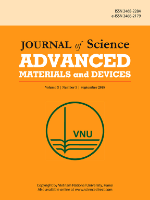
Journal of Science-Advanced Materials and Devices
Leading the Charge in Cutting-Edge Materials ResearchJournal of Science-Advanced Materials and Devices is a leading open-access journal published by Vietnam National University, dedicated to advancing the field of materials science through cutting-edge research and innovative developments. Since its inception in 2016, this journal has become a pivotal platform for sharing insights and discoveries in various subfields, including biomaterials, ceramics and composites, and electronic, optical, and magnetic materials. With impressive quartile rankings, including Q1 across multiple categories in 2023, and a notable Scopus ranking placing it in the top 15th percentile for ceramics and composites, it highlights the journal’s influence and prestige within the global academic community. Open Access since its launch, the journal aims to facilitate unrestricted dissemination of scholarly work, empowering researchers, professionals, and students to engage with the latest advancements. The Journal of Science-Advanced Materials and Devices is vital for those seeking high-quality contributions that influence both theoretical understanding and practical applications in the ever-evolving landscape of materials science.
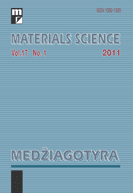
Materials Science-Medziagotyra
Fostering Collaboration in the World of Materials ScienceMaterials Science-Medziagotyra is a prominent peer-reviewed journal dedicated to the field of materials science, published by Kaunas University of Technology in Lithuania. Since its transition to an Open Access model in 2012, it has facilitated broad dissemination of research findings, enhancing accessibility for researchers and professionals worldwide. This journal is indexed in Scopus and has consistently contributed to the academic community with a focus on innovative materials and their applications, ranking in the Q3 category of Materials Science (miscellaneous) as of 2023. With the responsibility of synthesizing substantial research from 2008 through 2024, Materials Science-Medziagotyra aims to bridge gaps in material research while fostering collaboration among scientists, students, and industry leaders. Its commitment to quality and rigor in scientific discourse underscores its relevance and importance in advancing the field.
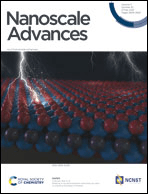
Nanoscale Advances
Advancing the Frontiers of Nanoscience.Nanoscale Advances, published by the Royal Society of Chemistry, stands out as a leading open-access journal dedicated to advancing the field of nanoscience and nanotechnology since its inception in 2018. With a specialized focus on areas such as atomic and molecular physics, bioengineering, chemistry, and materials science, this journal has consistently achieved top-tier rankings across several categories, reflecting its high-impact contribution to research and innovation. Currently classified in the Q1 quartile for both Atomic and Molecular Physics and Chemistry (Miscellaneous), and Q2 for Bioengineering, its prestige is underscored by impressive Scopus rankings, including a notable 34th position in General Engineering. With its commitment to disseminating high-quality research, Nanoscale Advances serves as an invaluable resource for researchers, professionals, and students alike, fostering collaboration and scholarly exchange in the rapidly evolving landscape of nanotechnology.

Nano Research
Connecting researchers to the world of nanoscale innovation.Nano Research, published by TSINGHUA UNIVERSITY PRESS, is a prestigious academic journal dedicated to advancing the fields of nanoscience and nanotechnology. Since its inception in 2009, the journal has established itself as a leading platform for the dissemination of high-quality research, evidenced by its impressive Q1 rankings across multiple categories including Atomic and Molecular Physics, Condensed Matter Physics, and Electrical and Electronic Engineering. With an impact that resonates globally, Nano Research not only attracts contributions from renowned researchers but also appeals to students and professionals striving to stay at the forefront of innovation. The journal’s commitment to excellence is reflected in its ranking, placing it in the top echelons of its field, as evidenced by its notable Scopus standings. Researchers can benefit from its rigorous peer-review process and broad scope, encompassing theoretical, experimental, and applied studies. For those passionate about pushing the boundaries of knowledge in the realm of nanotechnology, Nano Research serves as an indispensable resource.

ACS Nanoscience Au
Transforming Research into Open Access DiscoveriesACS Nanoscience Au, published by the American Chemical Society, is a leading open-access journal dedicated to the rapidly evolving field of nanoscience. Since its inception in 2021, this journal has established itself within the top quartiles of academic publishing, ranking Q1 in both Chemistry and Materials Science for 2023. With a commitment to disseminating high-quality research, it provides a platform for innovative findings in nanomaterials, nanotechnology applications, and associated interdisciplinary studies. The journal is based in the United States and embraces an open-access model, ensuring that research is freely accessible to a global audience. This initiative not only enhances the visibility of authors' work but also facilitates collaboration across scientific domains. As a vital resource for researchers, professionals, and students alike, ACS Nanoscience Au plays a crucial role in advancing knowledge in the nanoscience community.

Nanoscience and Technology-An International Journal
Fostering Interdisciplinary Collaboration in NanotechnologyNanoscience and Technology-An International Journal, published by BEGELL HOUSE INC, is a leading platform dedicated to the rapidly evolving fields of nanoscience and nanotechnology. With its ISSN 2572-4258 and E-ISSN 2572-4266, the journal serves as a crucial resource for researchers, professionals, and students alike, focusing on advanced materials, condensed matter physics, and mechanics of materials. It holds a commendable position in the scholarly community, evidenced by its Q2 ranking in 2023 across multiple categories including Condensed Matter Physics and Materials Science. The journal aims to disseminate high-quality research, promote interdisciplinary collaboration, and facilitate innovation within the nano realm. With its convergence period from 2019 to 2024, it continues to attract a diverse array of studies and insightful contributions, reinforcing its importance in shaping the future of nanotechnology and its applications.
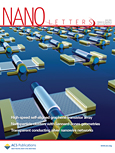
NANO LETTERS
Leading the charge in nanotechnology research.NANO LETTERS is a leading journal, published by the American Chemical Society, that focuses on the rapidly evolving field of nanoscience and nanotechnology. With an impressive impact factor and consistently ranked in the Q1 category across multiple disciplines including Bioengineering, Materials Science, and Condensed Matter Physics, it serves as an essential resource for researchers and professionals aiming to stay at the forefront of nano-related advancements. This journal, available in print and online (ISSN: 1530-6984, E-ISSN: 1530-6992), features cutting-edge research articles that explore the intricate interplay between nanoscale materials and emerging technologies, driving innovation across various sectors. As of 2023, NANO LETTERS holds prestigious rankings, including a top position in several Scopus categories, underscoring its impact within the scientific community. Published continuously since 2001, NANO LETTERS is dedicated to disseminating high-quality research papers that inspire and inform the next generation of scientists and engineers.
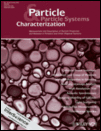
PARTICLE & PARTICLE SYSTEMS CHARACTERIZATION
Fostering Collaboration in Particle ResearchPARTICLE & PARTICLE SYSTEMS CHARACTERIZATION is a distinguished journal dedicated to advancing the knowledge within the fields of Chemistry, Condensed Matter Physics, and Materials Science. Published by WILEY-V C H VERLAG GMBH in Germany, this journal has established a solid reputation since its inception in 1984, showcasing research aimed at understanding the intricate properties and behaviors of particulate systems. With an impressive Q2 ranking in its respective categories and Scopus ranks indicating a robust standing in the global research community, it serves as an essential resource for researchers, professionals, and students. Although it does not currently offer Open Access options, its comprehensive articles and reviews provide valuable insights that contribute significantly to the ongoing discourse in these scientific domains. As it prepares to celebrate four decades of publication, PARTICLE & PARTICLE SYSTEMS CHARACTERIZATION continues to provide a vital platform for emerging knowledge, fostering innovation and collaboration among scientists dedicated to the study of particle systems.

Korean Journal of Materials Research
Pioneering Research for a Dynamic FieldKorean Journal of Materials Research is a pivotal publication in the field of materials science, offering a platform for innovative research and comprehensive reviews in miscellaneous materials applications. Published by the MATERIALS RESEARCH SOC KOREA, this journal has been a valuable resource since its inception in 2007 and continues to disseminate vital findings through 2024. Although currently categorized in Q4 of the Materials Science quartiles, the journal is committed to advancing knowledge and fostering research collaboration within the scientific community. With an ISSN of 1225-0562 and an E-ISSN of 2287-7258, the journal aims to bridge gaps in research and practice, appealing to a diverse audience of researchers, professionals, and students interested in the latest advancements in materials science. While access to content may not be open, the journal's impact in the regional and global research landscape is steadily growing, as indicated by its Scopus ranking in the 7th percentile of General Materials Science. Engage with the Korean Journal of Materials Research to stay at the forefront of materials innovation!